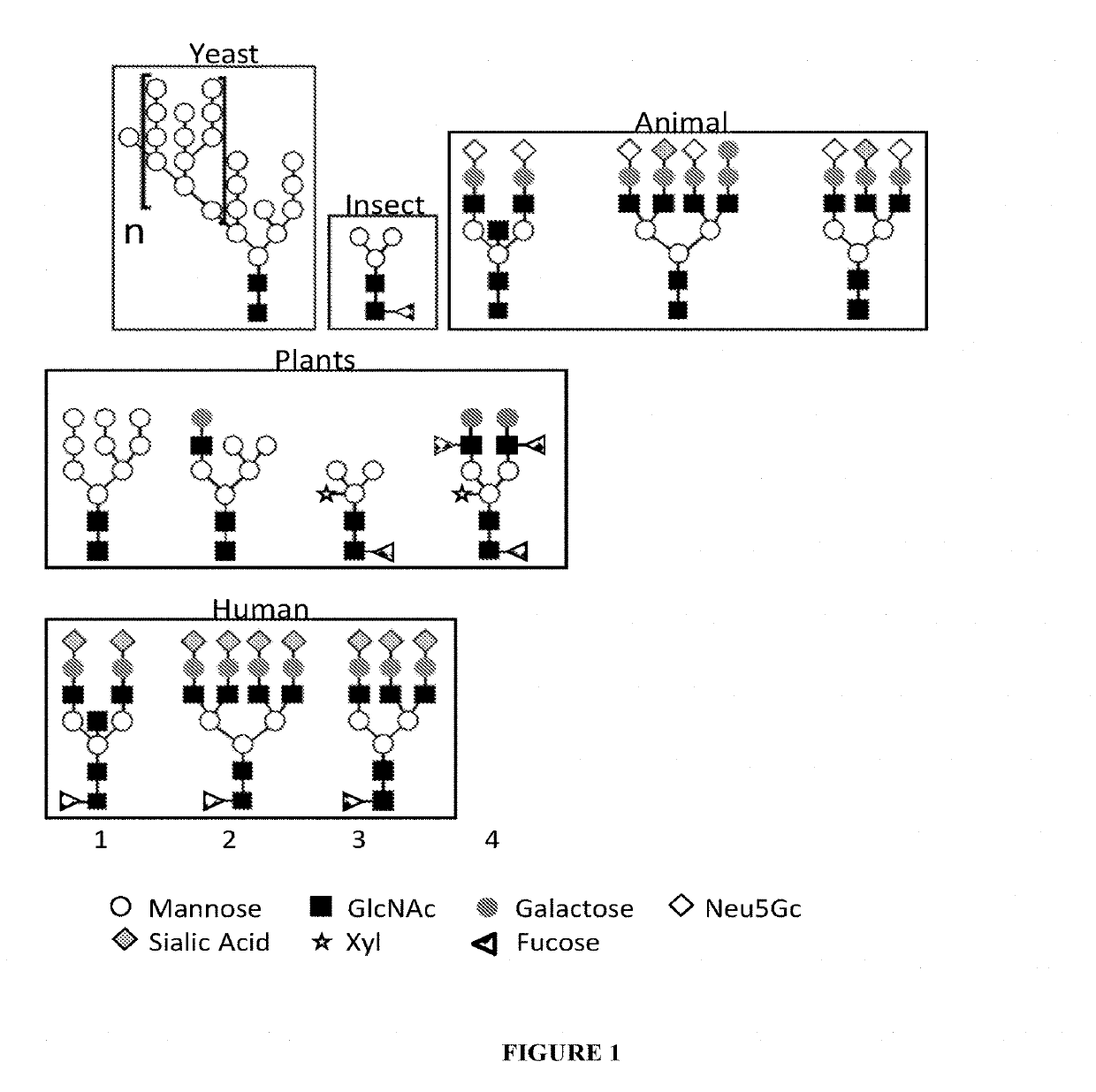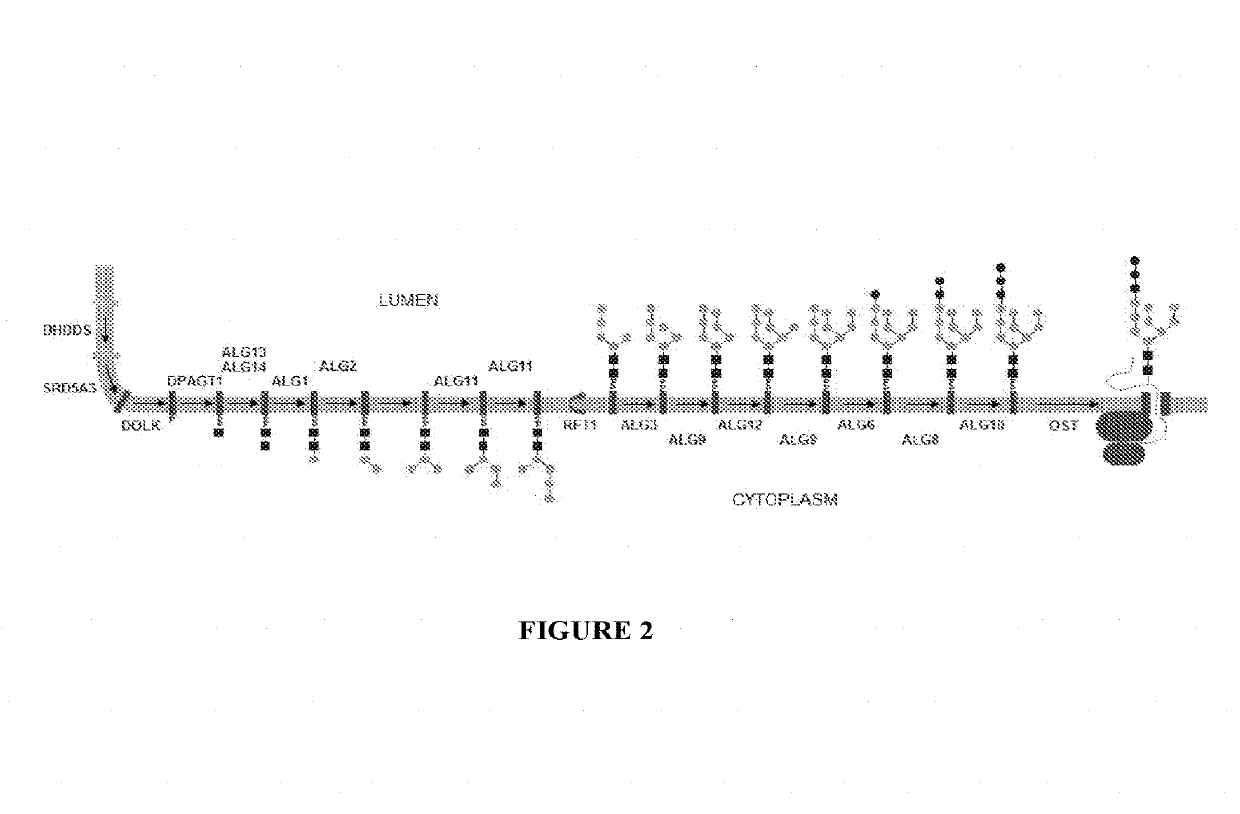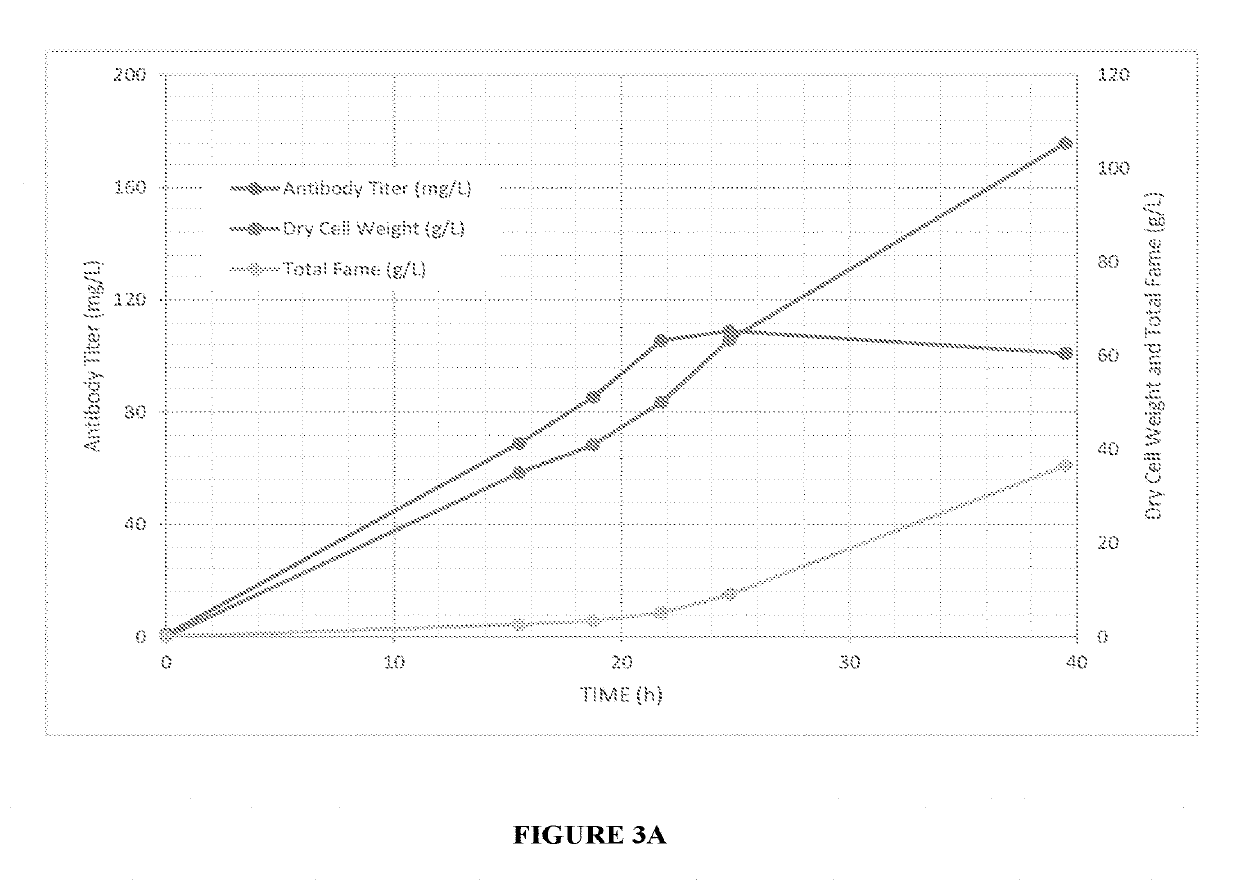Expression of modified glycoproteins and glycopeptides
a technology of glycoproteins and glycopeptides, which is applied in the direction of peptides, immunoglobulins, transferases, etc., can solve the problems of complex engineering, inability to properly interact with biological targets, and inability to improve the productivities of microbial cells,
- Summary
- Abstract
- Description
- Claims
- Application Information
AI Technical Summary
Benefits of technology
Problems solved by technology
Method used
Image
Examples
example 1
ab Expression
Constructs: PCAB056, 057, 060, 061
[0067]This example discloses specific expression constructs that can be applied in the present invention, but persons of ordinary skill with resort to this disclosure will realize many other constructs and variations of those here that can be utilized. Specific constructs pCAB056, 057, 060, and 061 are described in Table 1, which are disclosed with signal peptides. While specific signal peptides are provided herein other signal peptide can be utilized in the invention.
[0068]Construct pCAB056 contains the trastuzumab (or HERCEPTIN®) light chain with SEQ ID NO: 1, a signal peptide (#552), expressed from the TEF promoter. This cassette also carries a marker (hph) encoding resistance to hygromycin B. Construct pCAB057 contains the trastuzumab light chain with SEQ ID NO: 2, a signal peptide (#579), expressed from the TEF promoter. This cassette also carries a marker (hph) encoding resistance to hygromycin B. Construct pCAB060 contains the tr...
example 2
ion of Trastuzumab-Producing Strains (5942, 5950, and 5951)
[0070]Trastuzumab (HERCEPTIN®) was produced by co-transforming a wild type Aurantiochytrium cell #6267 with a pool of DNA comprised of linearized versions of pCAB056, 057, 060 and 061 from Example 1. Transformants that were resistant to both hygromycin B and paromomycin were screened by ELISA for production of antibody. Each clone was cultured overnight in 3 ml FM2 (17 g / L sea salt, 10 g / L yeast extract, 10 g / L peptone, 20 g / L dextrose) in a 24-well plate. They were then diluted 1000× into fresh FM2 (3 mL) and incubated for about 24 hours. The cells were pelleted by centrifugation and the supernatants were assayed using a heavy chain capture / light chain detect sandwich ELISA. The transformants were also screened by colony PCR to determine which signal peptides were present in the top producing clones. The strains with the 3 highest trastuzumab titers measured by sandwich ELISA are shown in Table 2. Diagnostic PCR revealed wh...
example 3
ion of Alg3 Deletion Cassettes
[0072]This example describes the construction of a linear fragment of DNA for the disruption of the alg3 gene. Three Alg3 genes identified as SG4EUKT579099 (SEQ ID NO: 3), SG4EUKT579102 (SEQ ID NO: 4), and SG4EUKT561246 (SEQ ID NO: 5) were found in the genome assembly of the wt Aurantiochytrium sp. All three sequences encode a 434 amino acid protein. SG4EUKT579099 and SG4EUKT579102 are identical at both the amino acid and nucleotide levels. SG4EUKT561246 has more than 99% identity to the other sequences at both the amino acid and nucleotide levels. This high level of identity allowed for the deletion of all three sequences with a single disruption cassette (alg3::nat) comprised of a selectable marker (nat) (which provides resistance to nourseothricin) flanked by 5′ and 3′ alg3 homology arms. The alg3::nat disruption cassette was generated by amplifying the 5′ and 3′ alg3 homology arms from a wild type strain genomic DNA, while the selectable marker (nat...
PUM
| Property | Measurement | Unit |
|---|---|---|
| concentration | aaaaa | aaaaa |
| concentration | aaaaa | aaaaa |
| temperature | aaaaa | aaaaa |
Abstract
Description
Claims
Application Information
 Login to View More
Login to View More - R&D
- Intellectual Property
- Life Sciences
- Materials
- Tech Scout
- Unparalleled Data Quality
- Higher Quality Content
- 60% Fewer Hallucinations
Browse by: Latest US Patents, China's latest patents, Technical Efficacy Thesaurus, Application Domain, Technology Topic, Popular Technical Reports.
© 2025 PatSnap. All rights reserved.Legal|Privacy policy|Modern Slavery Act Transparency Statement|Sitemap|About US| Contact US: help@patsnap.com



